Many daches have the impression that blackberry is a well-growing bush, on which at the end of August and in September Days ripen juicy black berries, similar in shape on raspberry. But grieves the gardeners to collect these useful berries interfere with hard spiny spikes located on shoots. Today we will tell about how to grow blackberry on the part of the blackberry.
Common culture
Blackberry belongs to the family of rustling, included in the genus "Raspberry". But her yield is about two to three times more than the raspberry.
It is a beautiful shrub with light green, separated by three lobes by leaves, on whose shoots there are no sharp scratching and clinging spikes. The edge of the leaves toothed, the entire surface is pubescent. Under the ground there are powerful rhizomes, which are rushing in the depths of the soil at 100-150 cm. Therefore, this culture is more drought-resistant, if you compare it with raspberry. Blackberry is conventionally divided into two groups:
- Kumaniquanists - they grow up the reprehension shoots on average from two to three meters. So grow varieties: "Polar", "Organa", "Guy", "Apache".
- Rosyany - they have strong shoots on the ground, which can grow to 4-6 meters long. Thus grow the following blackberry varieties sophisticated: "Loch Ness", "Black satin", "Tornfrey".
You can meet another variety of culture - this is half a blackberry, for example, Triple Crowon. First, their shoots rush up, and when the height of 60 cm reaches (and sometimes more), then begin to be tilted down.
A cycle of development of shoots of shattered blackberries occurs within two years. During the first year of life, there is an intensive growth of escape, the kidneys are laid on it. Fruption occurs in the second year. After the escape gives the fruit, he gradually dies. As a rule, white (or slightly pinkish) flowers on blackberry appear in June, when frosts are already behind. There are more dense berries in her more dense structure during transportation with cottages. It is especially recommended to use blackberry berries to those who suffer with osteoporosis, atherosclerosis, neurosis, pneumonia, diseases of the heart, kidneys, digestive system, joints, anemia. Not so long ago, after the studies, scientists have published materials that tell me that the regular use of non-bodies warn and slows down the division and development of tumor cells.
Popular blackberry sophisticated varieties
Blackberry is very common in America, England, Poland. Therefore, most of its varieties are brought by breeders in these countries.
- "Tornfrey" - this sophisticated grade appeared in the United States in 1966. There are many semi-stranded shoots on a strong bush that grow up to four meters long. The bush is very beautiful and attractive in the days of flowering, when the abundance of large (up to 3.5 cm in diameter) of flowers is revealed on it (up to 3.5 cm in diameter). All August on it ripen purple-black fruits having an ovoid shape and sour-sweet taste. The weight of each berry is about 5 grams. Do not overturn these fruits on the bush, they are very soft in the structure.
- "Loch Nesse" (named by the famous Lake Located in Scotland) - a yield variety derived by Scottish breeders in 1988. It is appreciated for the major fruits of oval shape (their weight is on average 5 grams), which are perfectly transported.
- "Loh Tay" - English variety, which early begins to give berries and does it for two weeks. Soothes semi-labeling, white flowers on them, and oval berries, with small seeds, their painting black.
- POLAR - This variety is obtained in Poland. The replacement grade, giving white flowers, and then rounded, large berries, the taste of which sour-sweet. They ripen them early.
- "Black satin" (can be translated as "black satin") - a bush is low (up to 120 -150 cm), formed by reprehensive shoots without spikes, which are first growing up, and then the transition to a horizontal position. Black berries are very tasty, with a gentle aroma, you can taste them in the second half of August.
- "Navajo" - a variety that gives the reprehension of shoots, in which the fragrant brilliant berries of black paint ripen.
- "Apache" is also a reprehensive variety derived in America. High-yielding, conical berries are sweet, attractive, appetizing, large size.
- Triple Crowon (translated as a "Triple Crown") - a superochny high bush, formed by fast-growing powerful sophisticated shoots (their length reaches two or more). From such a bush for the season you can collect up to 15 kilograms of sweet large black fruits, the weight of which will be 7-8 grams! When saving, you can catch a cherry taste. Berries pour and ripen in August-September. Experts allocate 3 advantages in this variety: excellent taste of berries, yield and energetic growth.
- "Chester Tornless" is a winter-hard-resistant American variety, giving half-plating shoots. In June, they were covered with wonderful pink flowers, and in August - brilliant black fruits.
- "Natchez" is a beautiful grade derived in the United States. Surprises large lented black berries, whose weight is from 12 to 16 grams. Kostyanki large, similar to the cakes of caviar. People who have tried these major fruits are surprised by their sweet taste. Semi-movable shoots. Ripening of berries occurs since July for five weeks.
The best varieties of blackberry silent advanced gardeners are recognized:
"Chester Tornless", "Natchez", "Loch Tay", "Poland", "Tornfrey", "Loch Ness".
Eschaspy blackberry landing
If you select the territory for blackberries where the sun is often happening, then the berries it will give large, tasty and sweet. And you can enjoy them already in August. You can place the bushes and in onest, but then the berries will be less fragrant and with obvious acid. Blackberry develops on any soils, but to obtain large yields it is better to plant this culture on loamy soil rich in humus, where the medium reaction is approximate to alkaline. The reaction of the medium can be corrected by dolomite flour or ash. Silent loams, too wet places for blackberry are not suitable. If the care behind the shattered blackberry is correct, the bush will be fruit for 10-15 years. Given this fact, the landing pit prepare in the same way as if they were going to plant a seedling, from which the static tree would grow. Approximate Pit size 60 × 60 centimeters. In the soil mixture to the garden land, you need to add two large velockers, two or three large glasses of ash and 80 grams of fertilizers (ready-made mineral complexes). The soil mixture with fertilizers should be at the bottom of the landing, so that young roots in the first time of adaptation are not in contact with mineral additives. First, from the soil mixture, make a holmik at the bottom of the pit, then place the roots of your seedling there. Then fall asleep roots of the earth, but the root neck can not be very shuffled (no more than one and a half centimeters). After the dumping of the soil, the shattered blackberry field (it takes about 5 liters of water). Next follows the mulching stage. There are gardeners, which when landing shoots trunks, leaving 6 cm from the ground. The landing is better planned for spring. But if you purchased the seedlings of the shattered blackberries in the fall, then be sure to cover your young plants before the arrival of winter folded in two layers of spunbond (its brand should be 60).
If you want to put some Kumanik bushes (with reprehension shoots), then leave the distance between them from one to one and a half meters. If you have a place for Rosyanik (sprinkling shoots), then the distance between the bushes should be much more - from two to three meters. If you neglect by this advice, in a few years there will be an "impassable forest" in the site, because the shoots of blackberries in good conditions grow very intense. We posted our bushes along the fence, and gradually we have formed a beautiful live fence.
Recommendations for care for sophisticated blackberry
At first, the Earth around young bushes periodically loose after the rain, pull out the ubiquitous weed herbs. When the bush becomes an adult, then experienced gardeners do not advise to rooke the soil around it, otherwise in those places where the roots hurt a little, small siblings will soon appear. They will grow and thicken the landing. A place under the bush is better to mulch a layer of 6 centimeters using compost or humus for this.
Blackberry for a long time can do without moisturizing the soil. But it is very important for her watering in June and September-October. And if at this time there is little precipitation, then at least once a week do not forget their bushes to water.
Sorts with reprehensive low shoots can be grown as ordinary bushes. But the varieties forming long peals or semidal shoots require more attention, it is more convenient to grow, placing on a hat (its height should be about two meters). In this case, you can use the weaving method. To begin with, we go to the wire, the diameter of which is from 3 to 4 mm. Tension and secure three tiers of this wire - at a distance of 50, 100 and 150 centimeters from the ground. In the spring, the shoots that left for fruiting, lift the wire to the upper strip, crush around it twice, tie, and then lower the escape to the medium tier, then conserve and pull up to the upper tier. So do it with all the shoots on which fruiting is expected. And to the lower tier, bring young shoots, whose age is one year. This year they will actively grow, gain strength and form the kidneys. With them berries you will collect next season.
To increase productivity, experienced gardeners cut off shoots (especially for the Navajo variety). The first time they do it in the last few days. Take the escape, the height of which is 120 cm, from the tops are cut off 10-25 cm. Then in the sinuses of the leaves soon "wake up" side shoots (from 4 to 5 pieces). In the spring, when these side branches will grow, they can also be shortened.
In the fall, all the old shoots from which the crop was collected, it is necessary to completely cut, making a cut near the surface of the Earth. At the same time, thickened landings can be broken. All cut shoots burned. In the spring, if necessary, you can still carry out a thinning trimming, while removing more and jerked, breaking down shoots. Usually there is enough six good shoots on the bush.
If the winter in your regions are cold (with a temperature below 20-25 degrees), then all young shoots need to burn to the soil before the winter period and hide the spunbond. In winter, we try on their blackberry felling sophisticated to sketch more snow. In the spring, the shelter from the Black Original Escapes is cleaned, and they are tied up on the shpaller,
As described earlier. And the growth cycle is repeated again.
It should be noted that such blackberry varieties are shattered as "Loch Nesse", "Natchez" are calmly carried under the snowy "coat" frost from 18 to 20 degrees. There are varieties that are not terribosed frosts up to 28 degrees even in low-snowing winter (this is "Poland", "Guy", "Chester Tornless").
In order for the blackberry better than, in the spring for each bush, nitrogen fertilizers can be made using ammonia nitrate or urea, 25 grams are enough. We prefer every year in May fertilize the blackberry of the silent strongly diluted rosyaka (or a cow).
Once every three years, it is recommended to enrich the soil with nutrients, distributing under a bush of 8 kilograms of compost, superphosphate (in the amount of 100 grams) and potash fertilizers (in the amount of 30 grams).
About reproduction of shattered blackberries
Mistoring blackberry varieties without spikes usually spread up, rooting the tops of annual shoots. Restress on 2 cm in the first days of August, the top of the upset escape, and then at a distance of 15 cm wrap the leaves and in this place, cover such escape to the ground, pressing it with a decision. The depth must be about 10 cm. Periodically, this place moisturize. About a month later, such a tip-drain turns roots. Immediately such "kids" do not compress from an adult bush. Let them remain near the maternal bush until spring. Then they fall the roots in the fall, they will pee well.
About diseases and pests
Experts argue that new varieties of shattered blackberries (for example, Chester Tornless, Loche Tey, "Natchez", "Orcan", Poloral) are endowed with persistent immunity, so they are much less likely to fall or damaged harmful insects. These bushes do not have to handle with any insecticidal drugs. Even the gallicle and the wave of black-based bushes do not touch.
The cultivation of shattered blackberry in the garden is an exciting and non-false occupation. In the spring, the whole bush was covered with bright green leaves, in June it blooms abundantly, then a lot of green small frods are tied on shoots. Gradually, they change their painting, increase in size. In August, you will easily and quickly collect juicy, black, brilliant berries with a variety of useful properties in August and three times a week. These fruits like to collect and children, because there are no spikes on their shoots. The yield of the bushes is high, so throughout the three-or-four weeks all your family will be touched by wonderful berries. If you brought a lot of berries from the country site, then deposit them at home, each of them close the lid and place on the shelves in the refrigerator, so they are well stored for seven days.


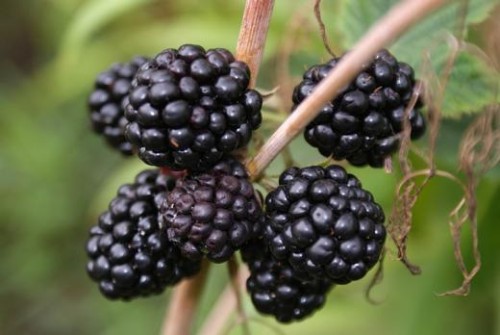
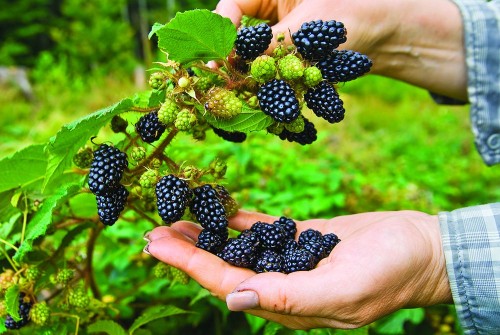
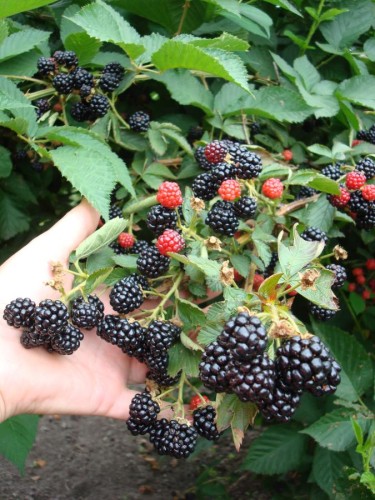
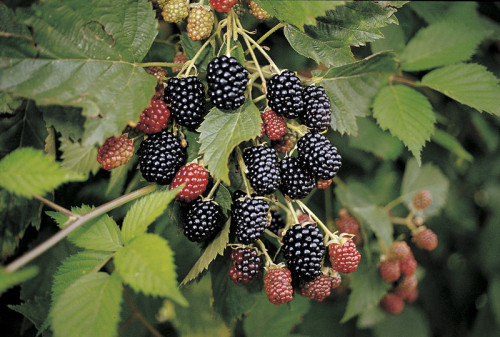
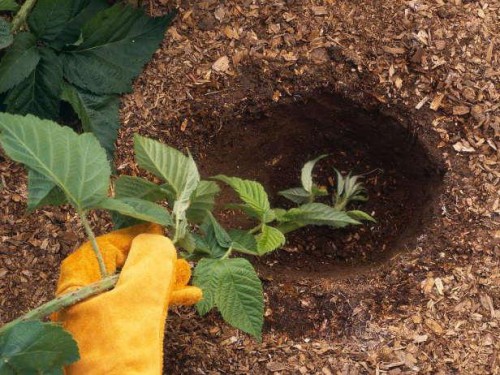
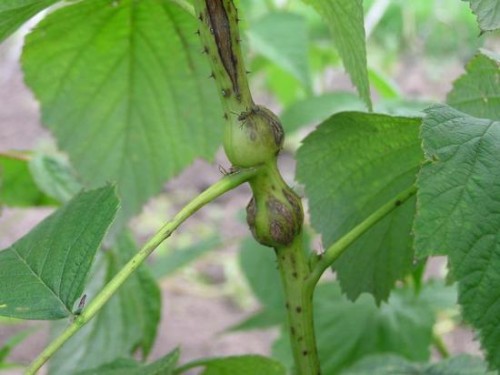
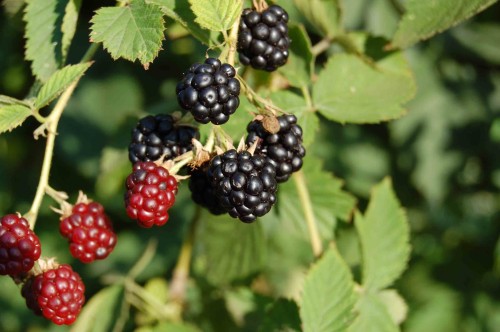
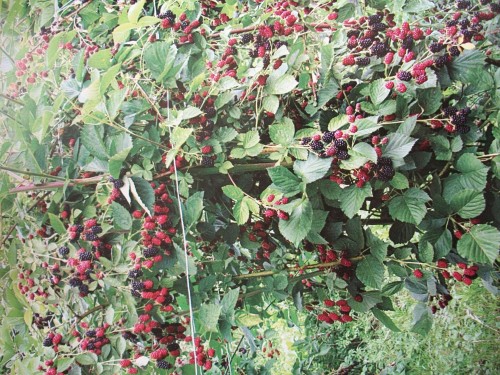
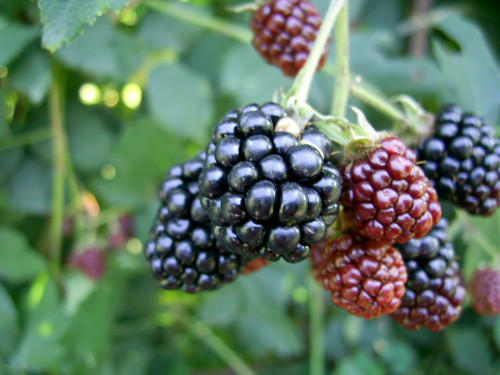
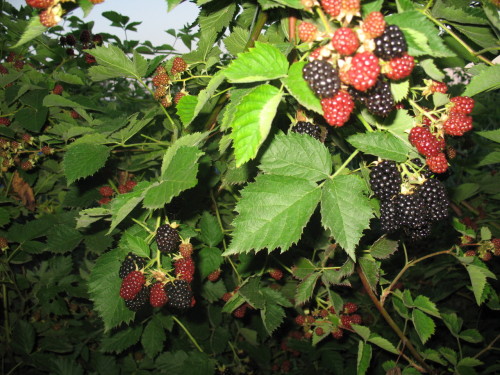












 Start a discussion ...
Start a discussion ...